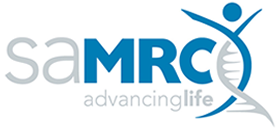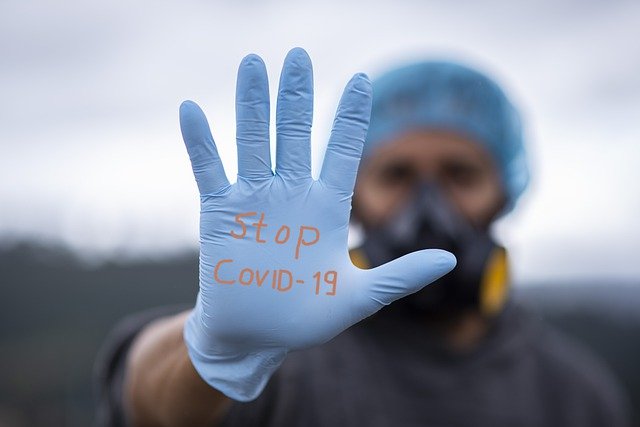Key dates, interventions, and impacts of responses are helping to create a community of practice among African countries
Cyril Ramaphosa, the president of the Republic of South Africa, said on April 5, 2020, one month into the COVID-19 outbreak in the country, “This pandemic will pass, but it is up to us to determine how long it will last.”
On March 5, South Africa reported her first confirmed COVID-19 case—a thirty-eight-year-old man who was part of a group of ten people that returned from a trip to northern Italy a few days earlier. All ten people were traced, isolated to avoid further spread, and tested for the novel coronavirus. The national Minister of Health organized a press briefing and issued a press release following confirmation of South Africa’s first COVID-19 case. Thereafter the minister issued daily press releases to update the South African public on the COVID-19 situation in the country. An extensive, multilingual and continuous campaign was undertaken on social media and through the press to educate the public on how the coronavirus spreads and how to prevent it. The educational messages emphasized the importance of frequent and thorough handwashing with soap and water (or use of an alcohol-based hand sanitizer), the need for physical distancing, how to cover the mouth with a tissue or flexed elbow when sneezing or coughing, and how and why people should seek medical attention when any COVID-19 symptoms occur. There was also a concerted effort to combat misinformation and disinformation on COVID-19 in South Africa.
One week into the outbreak, South Africa had seventeen confirmed cases of COVID-19. At that stage, all seventeen people had mild to moderate symptoms, and they were put in self-quarantine. Sixteen of the infected people had travelled back to South Africa from a high-risk country. However, it was disturbing to us that community transmission had already started within South Africa, as the seventeenth confirmed case had not travelled out of the country. On March 14, 2020—as part of a compassionate COVID-19 response—the government transported a group of 114 COVID-19 negative South Africans from Wuhan City in China back to South Africa. In a precautionary approach to reduce the risk of spread of the infection, the 114 people were put on fourteen-day quarantine in a purposely-selected isolated hotel.
With an increasing number of infected people and the onset of community transmission in South Africa, the government declared a national state of disaster on March 15, 2020, and created a National COVID-19 Command Council headed by President Ramaphosa. These decisions were aimed at facilitating a coordinated all-of-government approach to flattening the COVID-19 curve in South Africa. All government departments issued guidelines for services within their jurisdictions. Contact between groups of people was to be limited through social distancing—including the closure of schools and prohibition on gatherings of more than 100 people. There was also imposed a ban on travel from high-risk countries and prohibition of all non-essential travel by government officials. Mass communication on good hygiene and effective COVID-19 prevention behavior was intensified, and elbow greetings were recommended instead of handshaking.
Timeline of Events in South Africa's Coronavirus Response
South Africa is sharing lessons learned fighting pandemic to create community of practice in Africa
The activities of the National COVID-19 Command Council are supported by a Ministerial Advisory Committee, composed of forty-five eminent scientists with expertise and experience in laboratory testing, clinical matters, public health, and research. The committee synthesizes available scientific evidence into user-friendly formats to facilitate evidence-informed decision making by the command council. The advisory committee recently had a public engagement with the Minister of Health, which was broadcast through multiple national television channels and an online videoconference platform. During the public engagement, the committee presented the technical models used to predict the COVID-19 trajectory in the country.
Since the confirmation of the first COVID-19 case, South Africa put in place a robust mechanism for case investigation and contact tracing. Confirmed cases were isolated and treated, and their contacts were put on self-quarantine for fourteen days. Surveillance, screening, and testing measures were strengthened at international airports as part of the national state of disaster. Two-thirds of the country’s land ports of entry and two seaports were shut down. The government also announced plans to finalize a wide-ranging package of interventions to alleviate the economic effect of COVID-19, in consultation with the business sector and labor representatives.
During the first three weeks of the outbreak in South Africa, up to March 26, 2020, the cumulative number of COVID-19 cases was 927. The National COVID-19 Command Council decided to step up the fight by instituting a twenty-one-day national lockdown. South Africans were required to stay at home from March 27 to April 16, 2020 and were only to be allowed outside their homes to obtain food, medicine, fuel, or other essential services. In order to reduce unnecessary trips outside homes, the sale of non-essential goods—including liquor and cigarettes—was halted during the three-week national lockdown. The liquor ban was also expected to free up hospital capacity to deal with COVID-19 cases, as alcohol exerts a heavy toll on South Africa’s health system. Borders were kept closed and quarantines enforced on inbound travellers. The army was brought in to assist the police in enforcing the lockdown regulations.
On April 1, 2020, the country started deploying sixty-seven mobile testing units and 10,000 community health workers all over the country for community screening of COVID-19. This is expected to increase testing six-fold to 30,000 tests per day nationwide by the end of April 2020. By April 19, 2020, South Africa had conducted 114,711 tests with 3,158 (2.8 percent) confirmed positive for COVID-19. From these, 903 (28.6 percent) have recovered and fifty-four have died (1.7 percent fatality rate). Most of the infections occurred in people who travelled to high-risk countries and their contacts on return to South Africa.
South Africa’s tactics against COVID-19 have been mandatory social distancing as well as widespread testing of symptomatic persons to identify, isolate and treat infected persons and quarantine their contacts. In addition to these blanket public health measures, South Africa has set up multiple economic measures to support businesses and individuals adversely affected by the lockdown. Preliminary evidence shows that these measures have been successful in flattening the COVID-19 curve in South Africa. In the three weeks before the nationwide lockdown, the number of new positive COVID-19 cases was increasing by 40.6 percent each day, and this reduced to 3.9 percent during the first two weeks of the lockdown. We believe that the measures are sustainable and will result in widespread flattening of the curve. However, there is no room for complacency. The National COVID-19 Command Council has decided to extend the nationwide lockdown by two weeks to the end of April 2020. In an address to the nation on April 9, 2020, President Ramaphosa emphasized, “If we end the lockdown too soon or too abruptly, we risk a massive and uncontrollable resurgence of the disease.” In addition to handwashing, social distancing, and cough hygiene, South Africa now recommends the use of facemasks by the general population.
The performance of the South African government in the COVID-19 response has granted it a reprieve. Praises for the government emanating from all sectors of the South African society are at a level that I have never seen before. Political party leaders, the business sector, the civil society, and the public have all commended the government’s efforts against COVID-19.
South Africa has been sharing lessons learned in combatting the pandemic and helping to create a community of practice among African countries. On April 4, 2020, South Africa’s Minister of Health co-chaired the coordinating committee of the African Union’s Continental Response to COVID-19. At this meeting, a number of African countries shared ideas for strengthening coordination efforts to reduce the COVID-19 pandemic. The priority for Africa should be to safeguard the health and well being of Africans, minimize the number of coronavirus infections, and ensure that all infected persons get proper treatment. COVID-19 is spreading across Africa at a rate that nobody could have predicted when the first cases of the disease were diagnosed five months ago in China. However, Africans can do much to slow down its spread by following evidence-based guidelines. This would entail solidarity within and among African countries.
by Charles Shey Wiysonge April 20, 2020
Charles Shey Wiysonge is the Director of Cochrane South Africa at the South African Medical Research Council in Cape Town, South Africa @CharlesShey
Original article published on ThinkGlobal

